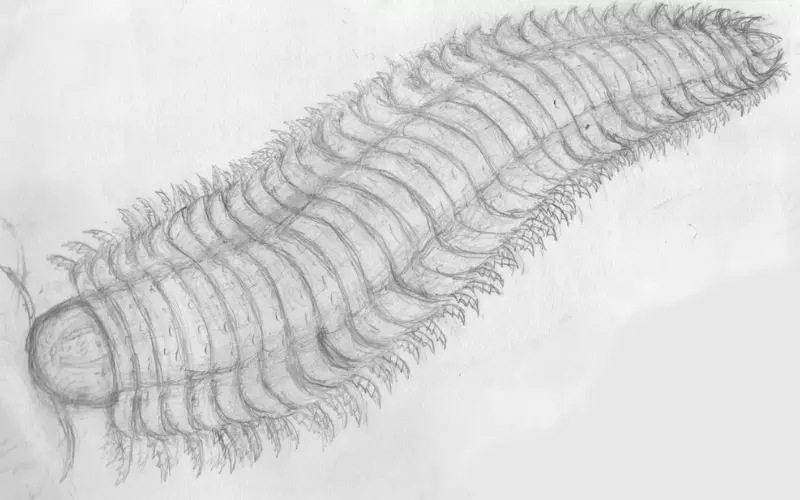Arthropleura is one of the most fascinating extinct animals that roamed the Earth millions of years ago. With its massive size and unique characteristics, this creature continues to captivate the imaginations of scientists and researchers.
During the Late Carboniferous period, Arthropleura lived around 299 to 311 million years ago. It was an enormous arthropod with a segmented body and numerous legs. This ancient giant reached lengths of up to 8 feet, making it one of the largest land-dwelling invertebrates ever known. Despite its intimidating size, Arthropleura was herbivorous, feeding on plants and detritus.
This ancient creature thrived in humid environments, such as swamps and forests, where it found an abundance of vegetation to sustain its massive frame. Its remains have been discovered in Europe and North America, indicating a wide distribution during its time. Arthropleura belonged to the subphylum Myriapoda, which includes modern-day centipedes and millipedes. Its scientific name is derived from Greek, meaning “jointed ribs,” referring to the segmented plates covering its body.
Stay tuned for our in-depth exploration of Arthropleura’s fascinating attributes, including its size, diet, and distinctive characteristics. Also, don’t forget to check out our previous article on over 155 other amazing extinct animals. Let’s continue uncovering the mysteries of the animal kingdom together!
History of Arthropleura
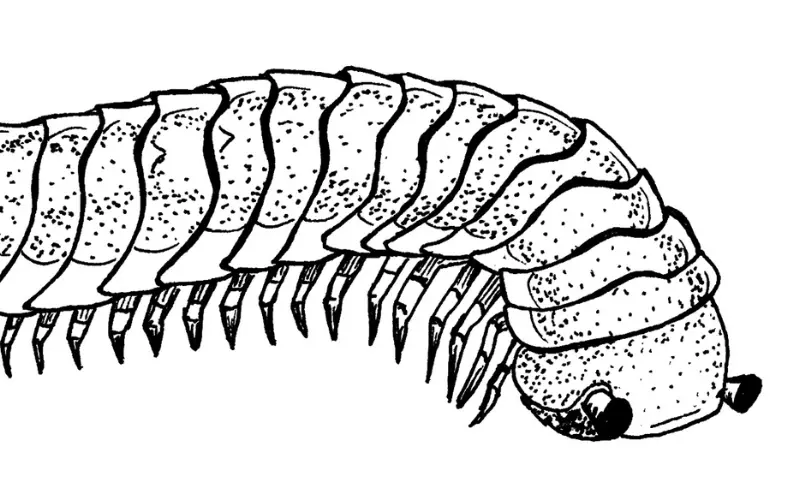
Arthropleura was a fascinating creature that lived on Earth over 300 million years ago, during a time known as the Carboniferous period. This period was characterized by a warm and humid climate, with vast forests and swamps stretching across the land. Arthropleura belongs to a group of animals called arthropods, which includes insects, spiders, and crustaceans.
Arthropleura was enormous. It is thought to be the largest land-dwelling arthropod that has ever existed, measuring up to 8.5 feet long! It had a long, segmented body with numerous pairs of legs, similar to a millipede. However, unlike millipedes, it had a hard exoskeleton, making it a formidable creature. Scientists believe that Arthropleura lived primarily in forests, which likely grazed on plants and decaying vegetation.
The fossils of Arthropleura have provided scientists with valuable insights into the Earth’s ancient past. They have discovered that Arthropleura was highly successful and widespread, with fossils found in many parts of North America and Europe. One of the reasons for its success was its ability to breathe air, allowing Arthropleura to move away from water and fully conquer the land. Sadly, as the Earth’s climate changed and the Carboniferous period ended, Arthropleura eventually became extinct.
Arthropleura was a gigantic arthropod that lived during the Carboniferous period. It had a long, segmented body and numerous legs and likely lived in forests, feeding on plants and decaying material. Although it is now extinct, the fossils of Arthropleura have helped scientists better understand the ancient world and the incredible diversity of life that once existed on our planet.
Importance of Arthropleura
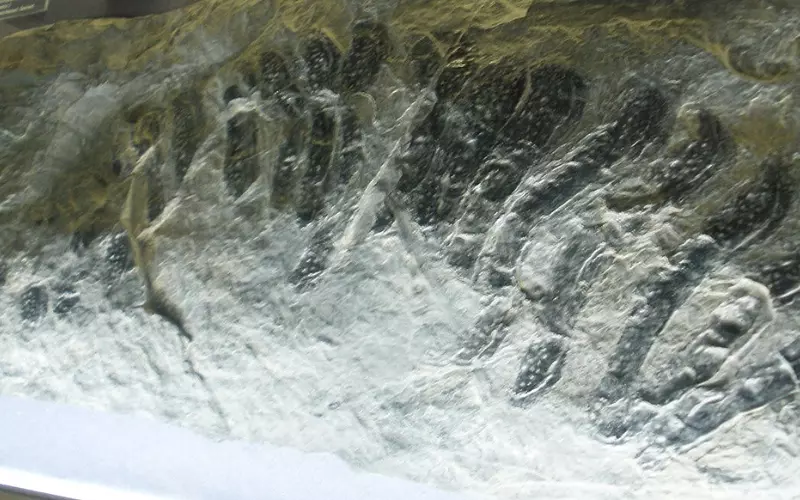
Arthropleura was a magnificent ancient creature that lived over 300 million years ago. Although it no longer exists today, it played an essential role in the ecosystem of its time.
Firstly, Arthropleura was one of the largest land invertebrates ever roaming Earth. Its immense size allowed it to eat much plant matter and help control the vegetation population. This helped balance the ecosystem by preventing plants from overgrowing and taking up all the resources. By keeping the plant population in check, Arthropleura created a more sustainable environment for other animals to thrive.
Secondly, Arthropleura’s larger body size made it an attractive prey for other animals, mainly fish and amphibians. Its abundance provided a valuable food source for these predators, allowing them to survive and reproduce. This helped maintain a healthy and diverse food chain within its ecosystem, ensuring the survival of numerous species.
Lastly, Arthropleura’s fossilized remains have provided scientists essential insights into the Earth’s ancient history. By studying its anatomy and behaviour, researchers have been able to understand more about the evolution and adaptation of ancient animals. These findings contribute to our knowledge of the natural world and help us better comprehend the changes that have occurred over millions of years.
Arthropleura was a crucial consumer and prey in the ancient ecosystem. Its abundance helped maintain a balanced environment, and its fossils provide valuable information for scientific research. Although it no longer exists today, its significance in the past continues to impact our understanding of the natural world.
Amazing Facts About Arthropleura

1. Arthropleura was an extinct animal that lived around 315 to 299 million years ago during the Carboniferous period.
2. It was an arthropod with a segmented body and jointed limbs.
3. Arthropleura was one of the largest land-dwelling arthropods ever known, reaching lengths of up to 8.5 feet (2.6 meters).
4. This ancient creature had a long, flattened body resembling a giant millipede or centipede.
5. Despite its intimidating size, it was likely a herbivore, feeding on plants and decaying organic matter.
6. Arthropleura had a tough exoskeleton made of chitin, which provided protection and support for its body.
7. Fossil evidence suggests it lived in warm, moist environments like swamps and forests.
8. It had numerous legs, with each body segment bearing two pairs of jointed limbs.
9. Arthropleura’s legs were likely used for walking, allowing it to move across the forest floor.
10. Scientists believe it may have also used its legs to help it swim through water, as it was likely a capable swimmer.
11. It had two sets of antennae on its head, which it used for sensing its surroundings and detecting food.
12. Arthropleura had simple eyes, known as ocelli, that helped differentiate light from dark.
13. Similar to millipedes, it could likely release defensive chemicals to deter predators.
14. Arthropleura means “jointed ribs,” referring to the appearance of its body segments.
15. Fossils of Arthropleura have been found in Europe and North America, providing valuable insights into the ancient ecosystems of the Carboniferous period.
Can we keep Arthropleura as our Pet?
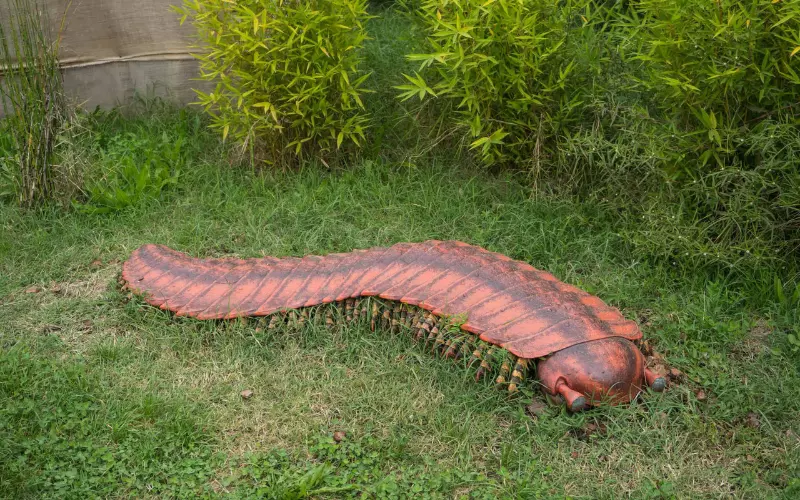
Unfortunately, we cannot keep Arthropleura as a pet. Arthropleura was a massive creature that lived millions of years ago and is now extinct. Let me tell you why it no longer exists and why we can’t keep it as a pet.
Arthropleura was a giant millipede-like animal that lived about 300 million years ago during the Carboniferous period. It was one of the largest land invertebrates of all time, reaching lengths of over 8 feet! However, these fantastic creatures went extinct around 280 million years ago.
The extinction of Arthropleura was likely due to a combination of factors. During the late Carboniferous period, the Earth experienced drastic changes in climate and environment. The lush forests these animals called home began to disappear, and new types of plants started to dominate. These changes led to a decline in food sources, which made it difficult for Arthropleura to survive. Additionally, as time went on, new predators evolved, making it even more challenging for Arthropleura to escape from them.
Arthropleura is an ancient, fascinating creature that once existed but is now extinct. While it would be incredible to have one as a pet, it ceased to exist many millions of years ago due to environmental changes and the emergence of new predators. As fascinating as they are, it is essential to remember that not all animals can be kept as pets, especially those that no longer exist.
Size of Arthropleura

Arthropleura was a giant prehistoric animal that lived millions of years ago. It was often called a millipede, but it was not like today’s millipedes. Arthropleura was much more significant – one of the largest arthropods ever lived on Earth!
Arthropleura could grow to be an incredible size. Its body comprised many segments, and it could measure up to 8 feet long! That’s longer than the average height of a grown-up person! Can you imagine how huge it must have been? It had a long, flat body covered in a hard exoskeleton, like a suit of armour. This exoskeleton helped protect it from predators and gave it the strength to support its massive size.
Even though Arthropleura was enormous, it was not a dangerous animal to humans. It mainly lived in swampy areas and forests and mostly ate decaying plants. That means it was more like an extensive vegetarian! Its many legs helped it move around, but it wasn’t swift. It had to crawl slowly along the ground using its many legs, like a giant centipede.
So, to sum it up, Arthropleura was a massive prehistoric animal that lived millions of years ago. It could grow up to 8 feet long, making it one of the largest arthropods ever known. Although it looked scary, it was harmless to humans, as it preferred to eat decaying plants. Its slow crawl was a sight to behold, and it remains a fascinating creature from Earth’s ancient past.
Habitat of Arthropleura

Arthropleura was a fascinating creature that lived long ago. It inhabited a specific environment known as the Carboniferous Period, which lasted from about 360 to 300 million years ago. The world was quite different from what we see today during this time. It was filled with lush forests and swamps, and the climate was warm and moist.
The habitat where Arthropleura lived was known as the coal forests. These forests were dominated by giant trees called lycopods and ferns, which provided plenty of food and shelter for this giant arthropod. Arthropleura preferred living near bodies of water, such as rivers and swamps, as it required a moist environment to survive.
The dense vegetation of the coal forests allowed Arthropleura to thrive. It would crawl through the undergrowth, using its many legs to navigate the terrain and find its preferred food sources. Although the exact diet of Arthropleura is unknown, it is believed to mainly feed on plant matter like leaves, ferns, and decaying vegetation. Some scientists even think it may have been able to eat small animals.
Arthropleura lived in the Carboniferous Period when the Earth was home to vast coal forests. These forests provided the ideal habitat for this giant arthropod, offering an abundance of abundant suitable environments to live in. By dwelling near bodies of water and navigating through the dense undergrowth, Arthropleura survived and thrived in this ancient world.
Evolution of Arthropleura
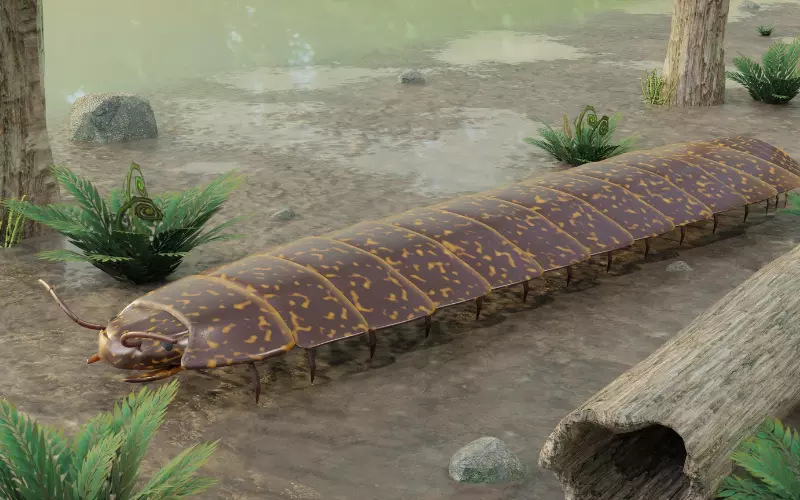
Arthropleura was an ancient animal that lived long ago during the Carboniferous period, about 340-280 million years ago. It was an arthropod with an exoskeleton and jointed legs, similar to modern insects and spiders.
Arthropleura started as a small and straightforward creature. Over time, it evolved and grew more prominent. The early species were only about 20 centimetres centimetres later, they could reach an incredible size of up to 2.6 meters! That’s longer than a grown-up person! It was one of the largest land invertebrates ever to roam the Earth.
Scientists believe that the evolution of Arthropleura was influenced by its environment. During the Carboniferous period, the Earth had warm and humid conditions. There were vast swampy forests rich in plants that Arthropleura could feed on. The more food there was, the bigger and stronger they grew. They had to adapt to this habitat to survive and exploit the abundant resources.
Eventually, Arthropleura disappeared from the Earth. There are a few theories about why this happened, but none are proven. Some scientists think that changes in the climate caused the decline of their preferred environment. In contrast, others believe new competitors or predators emerged, making it harder for Arthropleura to survive. Whatever the reason, it is fascinating to learn about these ancient giants and how they adapted and changed over time.
Classification of Arthropleura
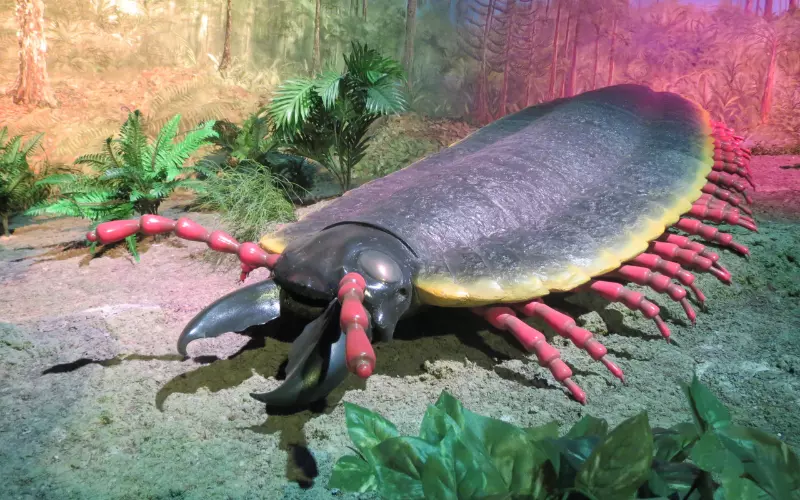
Arthropleura is an extinct animal that lived around 300 million years ago, during the Carboniferous period. It belongs to the ancient animals called arthropods, which include spiders, insects, and crabs. Arthropleura is one of the largest arthropods ever, with some species growing up to 8.5 feet (2.6 meters) long. It had a long, narrow body with many segments and numerous legs.
Arthropleura is classified within the subphylum Myriapoda, which includes centipedes and millipedes. It is classified under the order Arthropleurida, which is its separate group. The genus Arthropleura is divided into several species based on their size and certain physspecificatures. These species include Arthropleura armata, Arthropleura fischeri, and Arthropleura wetlugae. These animals are known from fossil remains found in Europe and North America.
The classification of Arthropleura helps scientists understand its evolutionary relationships and place it within the animal kingdom. By studying its fossil remains, scientists can learn more about the diversity and adaptations of ancient arthropods. Arthropleura shares some similarities with modern millipedes, such as its segmentation and multiple legs. However, it also had some unique features, like its large size, which set it apart from other arthropods.
Arthropleura is an extinct arthropod that lived during the Carboniferous period. It is classified under the subphylum Myriapoda and the order Arthropleurida. It had a long, narrow body with many segments and legs, making it one of the largest arthropods ever known. By studying its classification, scientists can gain insights into the evolutionary history of arthropods and the unique characteristics of Arthropleura.
How did Arthropleura become Extinct?
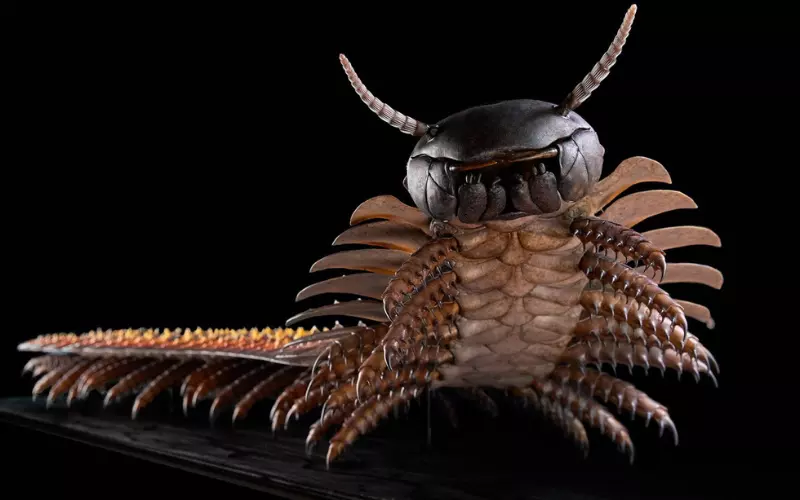
Arthropleura was a huge creaturmassiveom long ago, but sadly, it is no longer with us. So, how did Arthropleura go extinct? Scientists believe a few reasons played a part in its disappearance.
Firstly, Arthropleura lived during a time called the Carboniferous Period, which was about 323 to 299 million years ago. During this time, much volcanic activity led to harsh environmental conditions. The volcanic eruptions released vast amounts of ash and gases, causing changes in climate and making it difficult for many living things to survive. This climate change might have made it hard for Arthropleura to find enough food and live comfortably.
Secondly, during the Carboniferous Period, the Earth’s continents differed from what they are now. They were joined together to form a massive landmass called Pangaea. This means that animals in different locations had more difficulty migrating or finding new habitats. As a result, as environments changed due to volcanic activity, Arthropleura may not have been able to travel to more suitable areas and adapt to new conditions.
Lastly, another reason Arthropleura may have gone extinct is competition for food. Arthropleura was a herbivore, which means it ate plants. It is believed that as the climate changed, the types of plants also changed. This could have caused a decrease in the availability of Arthropleura’s food sources. With less food to eat, Arthropleura may not have been able to survive and reproduce, eventually leading to its extinction.
The disappearance of Arthropleura is likely due to a combination of harsh environmental conditions caused by volcanic activity, limited ability to adapt to new habitats due to the continents being joined, and competition for food sources. We can learn from the extinction of Arthropleura that the Earth’s climate and geographical changes significantly impact the survival of living organisms.
Geographical Presence of Arthropleura
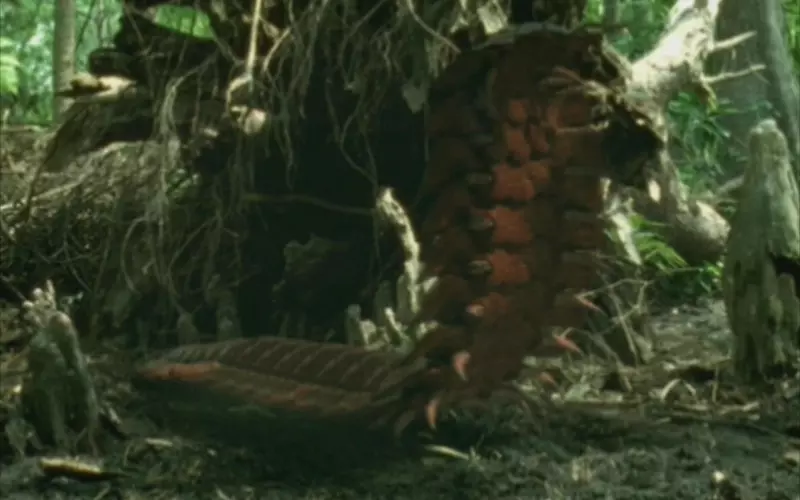
Arthropleura was a massive prehistoric animal that existed around 315 million years ago during the Carboniferous period. These creatures were found in what is now known as the North American region. They lived in swampy areas such as the coal forests, which covered a significant part of North America during that pleura was not restricted to one specific location within this region; instead, they were found in various parts, as long as the conditions were suitable for their survival.
However, Arthropleura is not found in the world today. They and many other prehistoric animals became extinct millions of years ago. Over time, the Earth has gone through significant changes, including shifts in climate and geological events, leading to the disappearance of certain species. Arthropleura was one of these unfortunate creatures that could not adapt well to these changing conditions and eventually vanished from the planet.
It is fascinating to think about the vast array of creatures that once roamed the Earth, such as the Arthropleura. While we cannot see them today, we can learn about them through fossils and scientific research. These ancient animals provide valuable insights into our planet’s history and how life has evolved over millions of years.
Scientific Name of Arthropleura
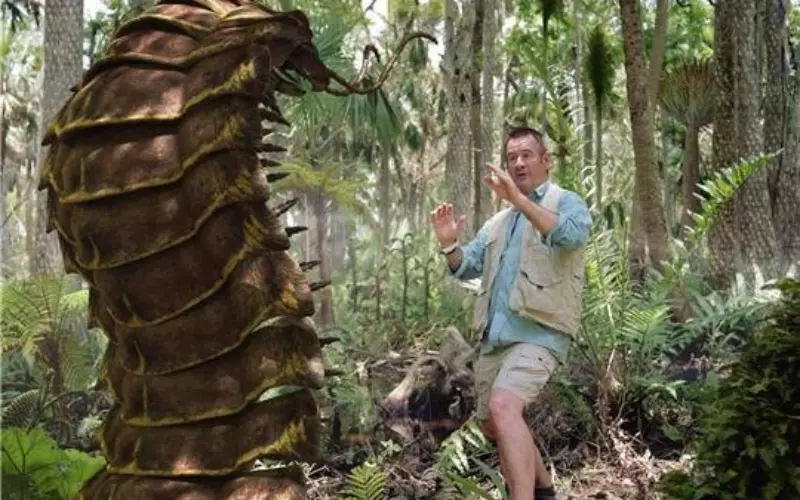
The scientific name of the creature called Arthropleura is Arthropleura armata. This fantastic animal existed millions of years ago, during a period known as the Carboniferous period, which was about 300 million years ago. Arthropleura armata was a gigantic arthropod, or in simpler terms, a giant bug! It was the most extensive land invertebrate that ever lived on our planet.
Arthropleura armata was enormous, with some individuals reaching lengths of up to 8.5 feet, about the same height as an average person! It had a long and narrow body comprising segments, each with its pair of legs. This creature had powerful jaws and could feed on plants and small animals. Like modern insects, it might have had a tough exoskeleton to help protect its body.
Although Arthropleura armata may look scary, it was not harmful to humans. It lived long ago and became extinct, meaning it no longer exists today. Scientists believe that changes in the Earth’s climate and the appearance of larger predators might have led to the extinction of this fascinating arthropod. Even though we can’t see it in real life, we can learn a lot about Arthropleura armata by studying the clues left behind in rocks and fossils.
Diet of Arthropleura
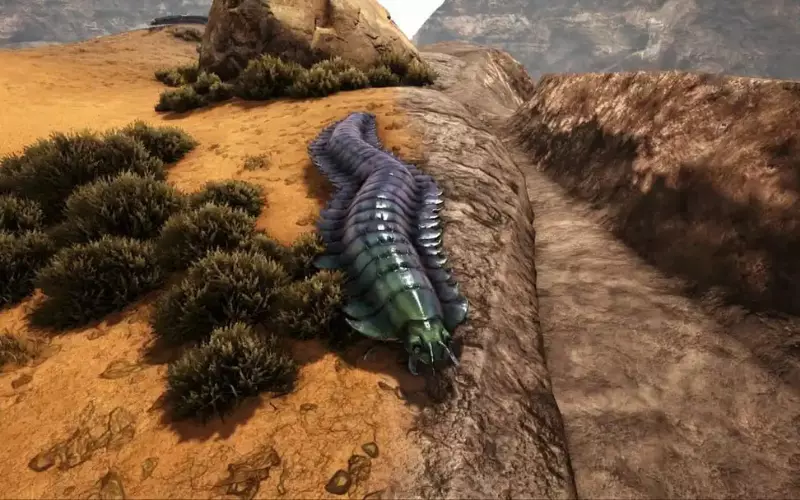
Arthropleura, a vast prehistoric creature, had an exciting diet. It lived long, long ago and liked to munch on plants. That’s right, Arthropleura was a herbivore. This means it only ate plants and didn’t hunt or eat other animals.
Arthropleura was a huge animal that needed a lot of food to satisfy its hunger. It used its strong jaws and sharp teeth to chomp down on different plants’ leaves, stems, and branches. It would eat anything, from small bushes to tall trees. Imagine how much greenery it must have ingested daily to grow and survive!
This enormous creature survived on a plant-based diet because it had specialized body parts like strong mouthparts and digestive systems designed to digest plant material. Its teeth were specially adapted to crunch through tough leaves and stems. Arthropleura had to eat a lot because it needed all the energy it could get to move its massive body. So, it spent much time munching on plants and digesting its meals.
Arthropleura was a plant-eating giant that roamed the Earth ages ago. It had a diet consisting solely of plants, as it was an herbivore. It used its strong jaws and sharp teeth to chew on all sorts of vegetation. This fantastic creature reminds us of the incredible variety in nature’s diet plans!
Locomotion of Arthropleura
Arthropleura, a prehistoric animal, moved in a unique way known as locomotion. Its long, flexible body allowed it to crawl across the land. Its body was made up of many segments connected by joints. This made it possible for Arthropleura to bend and move each part independently. Its numerous legs spread out along its body helped it move smoothly.
To move, the Arthropleura used a motion called undulation. It would contract and expand its body segments like a wave travelling along its length. This motion helped Arthropleura push forward and make its way over various terrains. With its numerous legs and flexible body, Arthropleura could crawl and explore different places on Earth.
Social and Sexual Behaviour of Arthropleura
Arthropleura, a prehistoric animal that lived long ago, had interesting social and sexual behaviours. These behaviours helped them to interact and reproduce with others of their kind. Let’s explore what we know about them.
Firstly, Arthropleura had social behaviours where they lived and moved together in groups. They stayed close to each other for protection and to find food quickly. Living in groups also helped them communicate with each other. They may have used sounds, movement, or even chemicals to communicate important messages like warning others about danger or telling them where to find food.
Secondly, Arthropleura had a unique sexual behavior. To reproduce and continue their species, the male Arthropleura competed for the attention of the females. They would engage in battles or show off their strength and size to prove themselves suitable mates. Once a male successfully attracted a female, they would mate, and the female would lay eggs, hatching into new Arthropleura.
These social and sexual behaviours of Arthropleura show us how they interacted with other members of their species and successfully reproduced to ensure the continuation of their kind. Studying these behaviours helps us understand the fascinating world of prehistoric creatures and their lives long ago.
Reproduction and Lifecycle of Arthropleura
The reproduction and life cycle of the Arthropleura animal is a fascinating process. These giant ancestors of centipedes lived about 300 million years ago during the Carboniferous period.
Arthropleura reproduced by laying eggs. The female Arthropleura would find a safe and moist spot to lay her eggs, such as under rocks or in caves. She then carefully buried the eggs to protect them from predators and harsh environmental conditions. The eggs would develop and hatch into smaller versions of the adult Arthropleura known as nymphs.
The nymphs, just like their parents, would crawl along the forest floor for food. They shed their outer layer of skin multiple times as they grew, a process known as moulting. Moulting allowed the nymphs to grow larger and more robust. As the nymphs moulted, they left behind exoskeletons, which can still be found as fossils today.
As the nymphs continued to grow, they would go through several moulting stages, gradually becoming larger and more similar to the adult Arthropleura. Eventually, after multiple moults, the nymphs would reach adulthood. They would have reached their full size and reproductive maturity at this stage. Adult Arthropleura would then continue the cycle by laying eggs to ensure the survival of their species.
Overall, the reproduction and life cycle of Arthropleura involved the laying of eggs by the female, the hatching of nymphs, and their gradual growth into adult Arthropleura. This process allowed these fascinating creatures to survive and thrive during the Carboniferous period.
Threats to Arthropleura
Arthropleura, an ancient creature that lived around 300 million years ago, faced several threats during its time. One major threat to Arthropleura was the presence of other large predators. These predators, such as large amphibians and reptiles, often saw Arthropleura as a food source. Being a slow-moving creature that relied on its size as a defence mechanism, Arthropleura struggled to defend itself against these swift and agile predators.
Another threat to Arthropleura was the changing climate. During its time, the Earth experienced periods of warming and cooling, which affected the availability of food and habitats for Arthropleura. As the climate changed, the plants that Arthropleura relied on for food also changed or became scarce. This made it difficult for Arthropleura to find enough food to survive and reproduce.
Additionally, the drying up of water sources posed a threat to Arthropleura. This ancient creature depended on moist conditions to survive, so when water sources like rivers and swamps dried up, it became challenging for Arthropleura to find the needed moisture. This lack of water not only affected its ability to find food but also impacted its overall survival.
Arthropleura faced threats from predators, changing climate, and the drying up of water sources. These challenges made it difficult for Arthropleura to survive and thrive in its environment.
Population of Arthropleura
Arthropleura was a giant prehistoric creature that lived millions of years ago. Scientists believe there were many Arthropleura animals during their time on Earth, but there is no exact number because they lived so long ago. However, their population was assumed to be relatively high due to their size and the evidence of their fossilized footprints. They were herbivores, which means they ate plants, and their large size would have required a lot of food to survive.
Unfortunately, Arthropleura is now extinct, meaning no more animals are alive today. They went extinct many years ago, and scientists believe that one of the reasons for their extinction was the changing climate. The Earth’s climate was getting cooler and drier, which made it harder for the Arthropleura to find the food and habitat they needed to survive. As a result, their population gradually declined until no more were left.
Today, scientists study the fossils of Arthropleura to learn more about this fascinating creature that once roamed the Earth. These fossils help them understand the history of life on our planet and how different species have evolved and gone extinct over time.
Conclusion
Arthropleura was a remarkable animal that roamed the Earth millions of years ago. It belonged to the group of land-dwelling giant millipedes, making it one of the largest arthropods ever discovered. These fantastic creatures had a variety of exciting features and an intriguing history.
Arthropleura was known for its enormous size, growing 8 feet long. This made it one of the largest land invertebrates during its time. It had a long, segmented body with numerous pairs of legs, allowing it to crawl along the forest floor easily. Despite its intimidating appearance, Arthropleura was a herbivore, feasting on ferns and other plants.
This fascinating animal lived in the Carboniferous period, around 315 to 299 million years ago. It thrived in swampy, humid environments, usually found in dense forests. As the climate changed and the forests disappeared, Arthropleura eventually went extinct, leaving only fossil evidence of their existence. Studying these fossils helps scientists understand the history and evolution of these ancient creatures.
Arthropleura was a massive, plant-eating arthropod that lived millions of years ago. Its size, habitat, and classification make it an essential subject of study for those interested in prehistoric animals. By learning about Arthropleura and other creatures like it, we can better understand the diversity of life that once existed on our planet.
Frequently Asked Questions about Arthropleura (FAQ’s)
What is an Arthropleura animal?
Arthropleura is an extinct genus of giant terrestrial arthropods that lived approximately 300 to 340 million years ago during the Late Carboniferous period.
How significant was Arthropleura?
Arthropleura could reach lengths of up to 8.5 feet (2.6 meters), making it one of the largest arthropods that had ever lived.
Where were Arthropleura fossils discovered?
Fossils of Arthropleura have been found in Europe and North America.
What did Arthropleura eat?
Arthropleura was a herbivorous animal, likely feeding on decaying plant matter and vegetation in its environment.
Did Arthropleura have any natural predators?
It is believed that Arthropleura did not have any significant natural predators due to its large size and tough exoskeleton.
How did the Arthropleura move?
Arthropleura likely had a series of jointed legs underneath its elongated body, allowing it to move in a wave-like motion.
Did Arthropleura have any defensive mechanisms?
Arthropleura had a thick exoskeleton, which may have helped protect it from harm.
How long did Arthropleura live?
The lifespan of Arthropleura is currently unknown, but it is estimated to have had a relatively short lifespan compared to some other organisms.
Are there any living relatives of Arthropleura?
No, there are no living relatives of Arthropleura. It belongs to an extinct lineage of arthropods.
Can Arthropleura be considered a dinosaur?
No, Arthropleura is not a dinosaur. It is an extinct arthropod that existed before the emergence of dinosaurs.
How were Arthropleura fossils preserved?
Arthropleura fossils are often found in coal deposits, where the organic matter of the animal’s exoskeleton was preserved over millions of years.
What caused the extinction of Arthropleura?
The exact cause of Arthropleura’s extinction is still uncertain, but it is believed to be related to changes in environmental conditions during the late Carboniferous period.
Did Arthropleura have any social behaviours?
No evidence suggests that Arthropleura exhibited any social behaviours. They were likely solitary creatures.
How do scientists study Arthropleura?
Scientists study Arthropleura by analysing fossil remains, such as examining the structure of their exoskeleton and reconstructing their ecology.
What is the significance of Arthropleura in palaeontology?
Arthropleura is significant in palaeontology as it provides insights into the diversity and ecology of ancient arthropods and the history of life on Earth.

Hi there! I’m Morgan Gutierrez, and I love animals! I work as a Seasonal Animal Care Specialist at Brookfield Zoo and also teach people about animals, which is super fun. I studied at Valparaiso University in Lockport, Illinois, where I learned even more about these amazing creatures.
I’m not just about taking care of animals; I write articles about them, too! I explore and share many interesting animal stories, from cute kittens to giant elephants.
In the past, I’ve worked with veterinarians, helped with research, and even been an Animal Ambassador, bringing animals closer to people. Animals are my passion, and I enjoy helping others learn about them. So, if you ever want to know about animals, feel free to ask. I’ll explain it in a way that’s easy to understand, just like talking to a friend!

